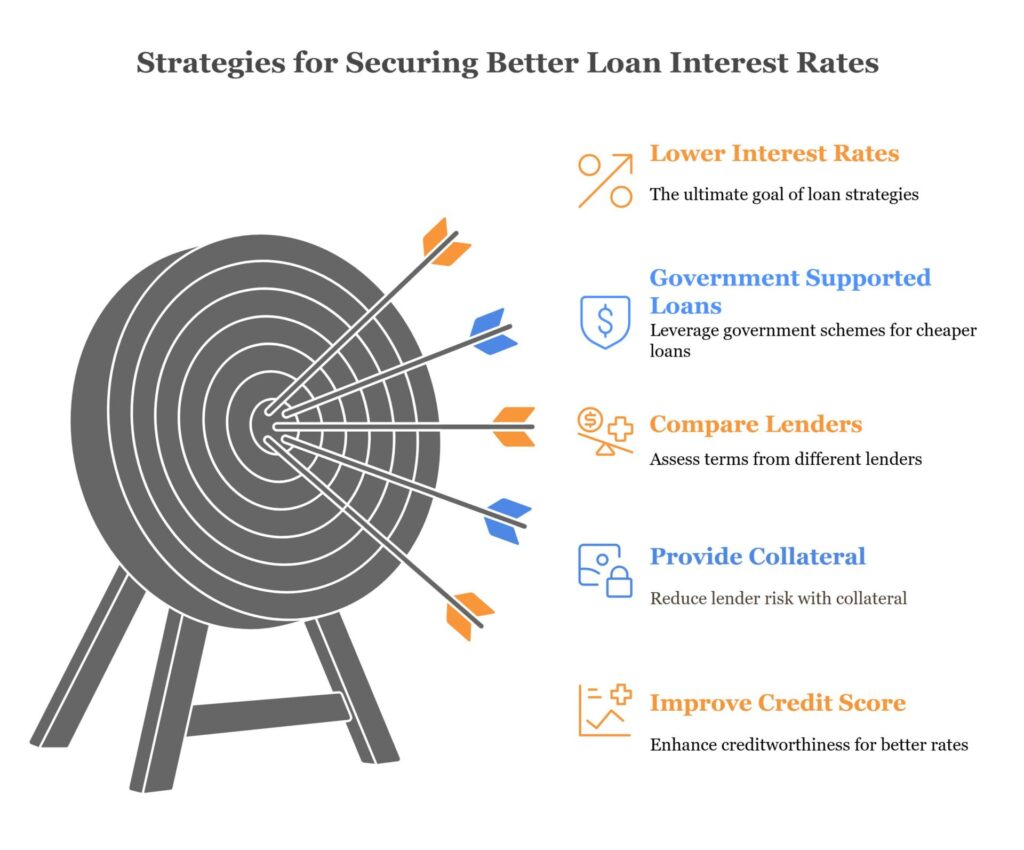The Impact of Interest Rates on Short-Term Small Business Loans

The Impact of Interest Rates on Short-Term Small Business Loans
Interest rates serve as the financial heartbeat of short-term small business loans, directly influencing both the cost of borrowing and your business's growth potential. While these loans provide quick access to working capital, understanding how interest rates affect your bottom line can mean the difference between profitable financing and debt that constrains your business operations.
Understanding Short-Term Loan Interest Structures
Higher Rates, Shorter Terms
Short-term business loans typically carry higher interest rates than traditional long-term financing, often ranging from 10% to 50% annually. This premium reflects the increased risk lenders assume with faster repayment schedules and the convenience of quick funding. However, the shorter repayment period means you pay interest for less time overall.
Daily vs. Annual Rate Impact
Many short-term loans quote daily rates that seem minimal—perhaps 0.1% per day. However, this translates to roughly 36.5% annually, significantly higher than traditional term loans. Understanding this conversion helps you accurately compare financing options and calculate true borrowing costs.
Direct Cost Impact on Business Operations
- Cash Flow Pressure: Higher interest rates create more substantial monthly or weekly payment obligations, directly impacting your available cash flow. A $50,000 loan at 15% requires different cash flow management than the same amount at 30%. This difference can determine whether you have sufficient working capital for daily operations.
- Break-Even Point Calculations: Interest rates directly affect how quickly your investment must generate returns to justify borrowing costs. If you're borrowing for inventory that generates 25% profit margins, a 35% interest rate means the financing costs consume most of your profits, potentially making the venture unprofitable.
Strategic Business Implications
- Opportunity Cost Considerations: High interest rates force you to evaluate whether borrowed funds will generate returns exceeding the borrowing costs. If you're paying 40% interest annually, your business investment must generate returns above that threshold to create value, limiting which opportunities make financial sense.
- Growth Velocity vs. Cost Trade-offs: Sometimes accepting higher interest rates for quick funding enables you to capitalize on time-sensitive opportunities that generate returns far exceeding borrowing costs. The key is calculating whether the speed and opportunity justify the premium pricing.
Market Condition Influences
- Federal Rate Environment: Short-term loan rates generally follow broader interest rate trends. When federal rates rise, short-term business loan rates typically increase as well. Timing your borrowing around rate cycles can save significant money, though business needs don't always align with optimal rate environments.
- Credit Market Competition: Increased competition among alternative lenders has driven down rates for qualified borrowers. Businesses with strong credit profiles and cash flow can now access short-term funding at rates that were unavailable just a few years ago.
Risk Assessment and Pricing
- Credit Profile Impact: Your business credit score and financial strength directly influence the interest rates you'll receive. Businesses with excellent credit might access short-term loans at 12-18% rates, while those with challenged credit could face rates of 30-50% or higher.
- Industry-Specific Considerations: Some industries are considered higher risk and face elevated rates regardless of individual business performance. Restaurants, retail businesses, and startups often pay premium rates compared to established professional services or manufacturing companies.
Mitigating Interest Rate Impact
- Shorter Repayment Strategies: Since you pay interest only on outstanding balances, repaying loans ahead of schedule reduces total interest costs. If cash flow allows, making larger payments early in the loan term can significantly reduce total borrowing expenses.
- Rate Shopping Benefits: Comparing rates from multiple lenders can reveal significant differences. The gap between highest and lowest offers for the same borrower can be 10-15 percentage points or more, representing thousands in potential savings.
Economic Environment Considerations
- Inflation Impact: During high inflation periods, fixed-rate short-term loans become more attractive as you repay with dollars worth less than when borrowed. Conversely, during deflationary periods, variable rates might offer better value.
- Business Cycle Timing: Economic uncertainty typically increases short-term loan rates as lenders price in additional risk. Securing credit facilities during stable economic periods can provide access to better rates when you actually need funding.
Making Informed Decisions
- Total Cost Analysis: Always calculate the total dollar amount you'll pay in interest over the loan term, not just the rate percentage. A 25% rate on a 6-month loan costs less in total dollars than a 20% rate on a 12-month loan for the same principal amount.
- Alternative Comparison: Compare short-term loan costs against other funding sources including business credit cards, lines of credit, or longer-term loans. Sometimes a slightly longer-term loan at lower rates provides better overall value despite slower access to funds.
Strategic Perspective
Interest rates on short-term small business loans represent the price of financial flexibility and speed. While higher than traditional financing, they can be worthwhile when the funding enables growth, capitalizes on opportunities, or solves critical cash flow challenges that would otherwise limit your business potential.
The key is understanding the true cost, evaluating it against expected returns, and ensuring your business can comfortably handle the payment obligations without compromising operational stability.